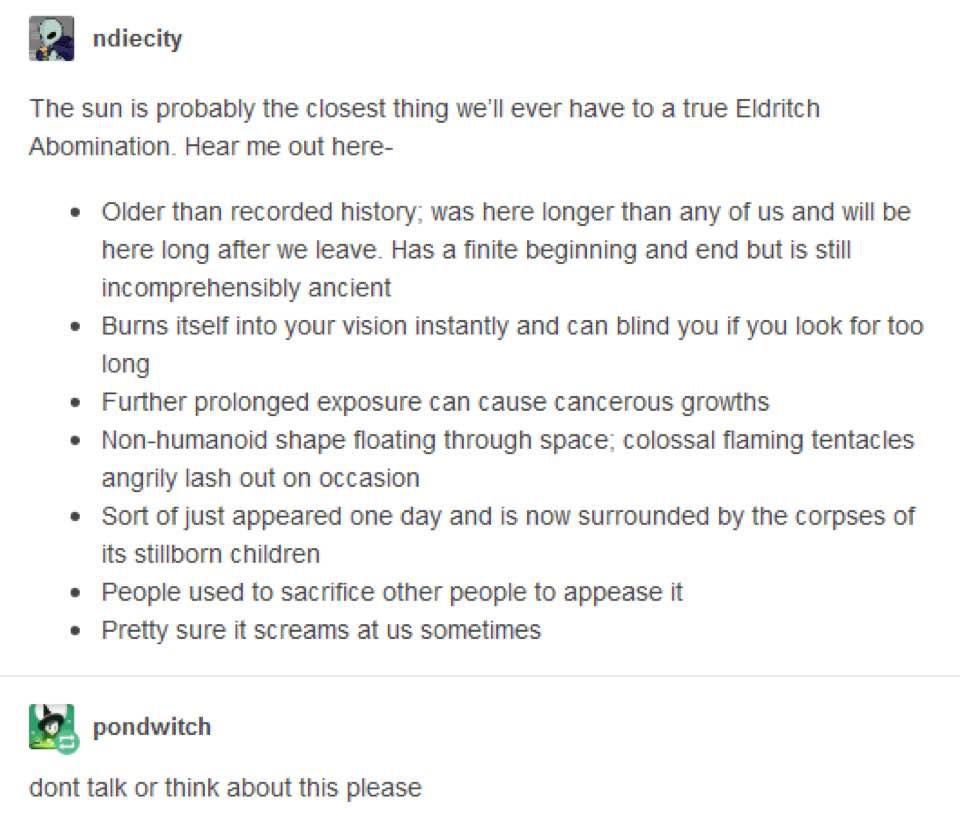Cosmic Horror
A community to discuss Cosmic Horror in it's many forms; books, films, comics, art, TV, music, RPGs, video games etc.
"cosmic horror... is a subgenre of horror fiction and weird fiction that emphasizes the horror of the unknowable and incomprehensible more than gore or other elements of shock... themes of cosmic dread, forbidden and dangerous knowledge, madness, non-human influences on humanity, religion and superstition, fate and inevitability, and the risks associated with scientific discoveries... the sense that ordinary life is a thin shell over a reality that is so alien and abstract in comparison that merely contemplating it would damage the sanity of the ordinary person, insignificance and powerlessness at the cosmic scale..."
- Wikipedia
For more Lovecraft & Mythos-inspired Cosmic Horror:-[email protected]
view the rest of the comments

Dammit I must have clicked outside my subscriptions again.
So anyway here's a reminder that if you take a stellar lifetime and map it down to something like a human lifetime, the relative slowness of the speed of light mostly goes away, down to something within an reasonable approximation of the speed of sound in air, give or take.
This means that stars, at least in close proximity to each other, could theoretically be having conversations (by means of light across vacuum) that to them, don't seem to take all that long at all.
And they have all that boiling mass doing who knows what and so much real time to think...
Nice try buddy, the ratio is 138 times higher for stars / lightspeed than it is human / soundspeed, not to mention the distance at which we have conversations is 1 human wide, clearly not the same between stars.
I admit it's been a while since I did the calculations so I must have misremembered the speed of sound part.
Trying again now (with less brain than I once had) I think you could still get a few million intercommunications between stars hundreds of light years apart within their lifespans, and stars only a handful of light years apart could be even more chatty.
You're comparing based on size. I think lifespan would be more relevant. Let's compare a 10 billion year lifespan to a 100 year lifespan. That makes 1 year of human life equivalent to 100 million years of a star's life. So a distance of 10 light years would mean 10 years for a message to get across. Which, at the 1 to 100 million time rate difference, still means an equivalent of 3 seconds. So yeah, communication would be slower than for humans, even for relatively close neighbors.